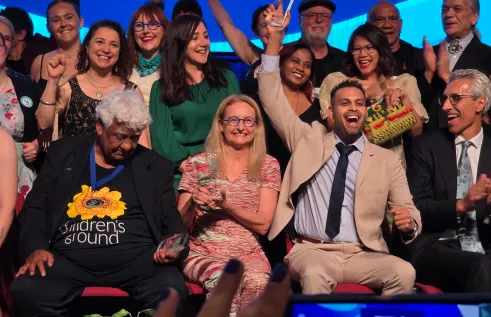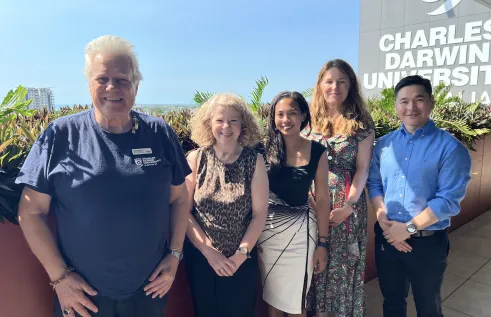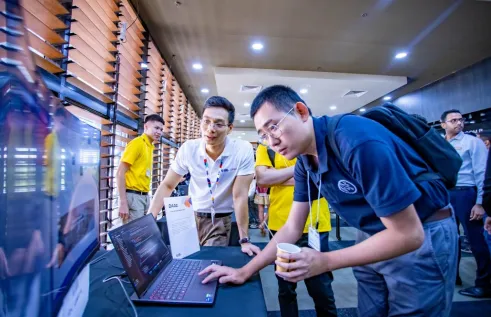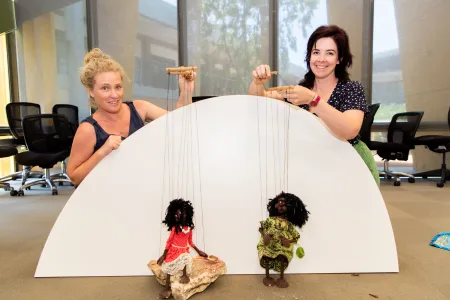News
Creative therapies harness healing power of art
Students are learning to use creative tools from marionettes to virtual reality for therapeutic results as part of a redesigned creative therapies course at Charles Darwin University (CDU).
The Graduate Certificate and Graduate Diploma of Creative Therapies are uniquely tailored to the working environment of the Northern Territory, enabling students to understand and acquire the healing power of art in dealing with trauma among children and adults, especially in First Nations communities.
Students from across the nation have access to a combination of online learning modules, on-campus intensive classes and on-country experiences, where they develop both a theoretical foundation and hands-on knowledge such as storytelling using marionettes, virtual reality, dance, drama, painting and crafting.
Course coordinator Dr Michelle Moss works alongside Larrakia elder, artist and healer Anthony (Tony) Duwun Lee in developing the course structure and learning content.
“Many current therapy programs often impose Western ideas and assumptions. It’s important to unpack some of these ideas and embed cross-cultural notions, so we can create a better experience for people in the community,” Dr Moss said.
“We have deconstructed the traditional curriculum and brought in First Nations ideas. The course is designed to provide skills for people on-country.”
Delicately handcrafted marionettes are used at group therapies on-country for people to share stories based on their cultural experiences.
“Marionettes are a good way to talk about difficult experiences. They give people a space to explore their thoughts.
Larrakia healer Mr Lee has produced artworks and offered his insights into spiritual healing for First Nations peoples.
“Aboriginal people are a spiritual people who live a physical experience. Our connections to ancestors, country, dreaming and lore form a key part of who we are,” Mr Lee said.
“Once someone experiences a disconnect from the spirit, it’s as if the lights are not on; no one is home.”
Virtual reality is another attractive technology for therapy, where students harness their imagination and transport users to a fantasy world to connect with their feelings.
CDU creative therapies student and professional in child protection, Alma Hanna, says the artistic approach could activate pathways for children to heal from traumatic experiences.
“It helps them to open up and keeps them culturally and emotionally safe,” Ms Hanna said.
A qualification in creative therapies enables graduates to work in fields such as child protection, social services, health, justice, education and gain insights and expertise in First Nations and culturally diverse communities.
Related Articles

CDU alumnus wins national human rights award, pushes for Australia-wide legislation
A Charles Darwin University (CDU) alumnus has received top honours at the Australian Human Rights Commission’s awards gala, using his acceptance speech to push for nationalised human rights legislation.
Read more about CDU alumnus wins national human rights award, pushes for Australia-wide legislation
CDU Free Tax Clinic a finalist for prestigious award
Charles Darwin University’s (CDU) Free Tax Clinic has been named one of five finalists for Shaping Australia’s 2025 Community Champion Award.
Read more about CDU Free Tax Clinic a finalist for prestigious award
CDU IT Code Fair marks significant milestone with second location
Building on the success of the Charles Darwin University IT Code Fair, the 2025 event has expanded to the CDU Sydney Campus for the first time.
Read more about CDU IT Code Fair marks significant milestone with second location
